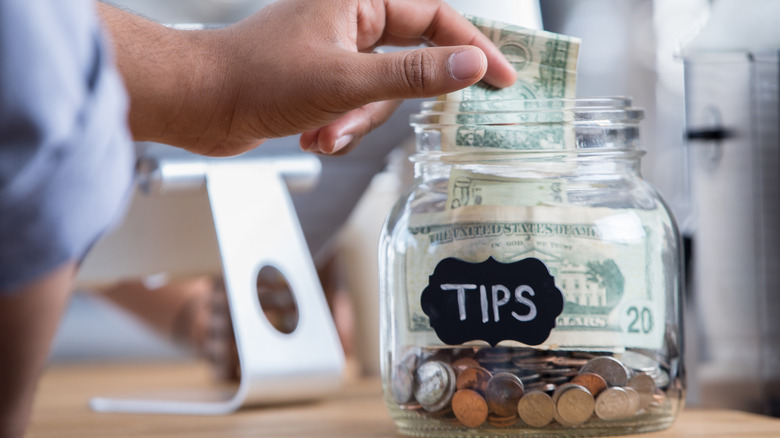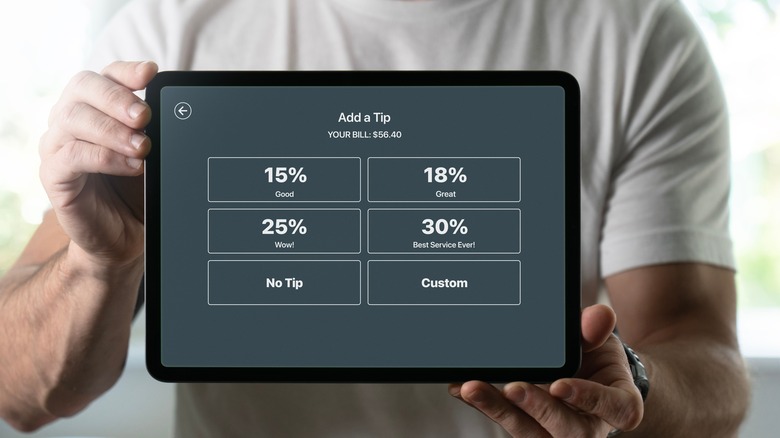New Study Shows How Much American Diners Really Want To Tip
American culture is much more tip-friendly than other countries, but that doesn't mean consumers are happy about it. Though considered optional, tipping in a restaurant is nonetheless expected in the USA, where many employees rely on it to supplement hourly pay that falls below the minimum wage. Other cultures generally consider it a small, kind gesture for a job well done. But recent studies and reporting reveal how Americans really feel about the ever-increasing pressure to tip.
In a study by Pew Research Center, conducted between August 7 and 27, 2023, participants weighed in on tipping culture across the board. Coinciding with newly coined terms such as tipflation and tip fatigue, 72% of adult Americans feel the practice is more expected now than a mere five years ago and in a wider variety of places. When it comes to dining, including traditional restaurants, coffee shops, bars, fast casual eateries, and food delivery, tipping behavior varies. But one surprising statistic stands out.
Regarding in-house dining at a sit-down restaurant, from a pool of nearly 1200 respondents, 57% revealed they'd tip only 15% or less when eating an average restaurant meal. Among them are the 2% that would rather stick to their convictions by not tipping at all. As far as tipping in higher amounts, 25% of people indicate a willingness to leave server tips of 20% or more. The idea of 15%-or-less tipping may seem low, but many nuances define the way diners see the "voluntary" tipping obligation.
Strong convictions affect whether and how much to tip
Considering that restaurant servers are often required to share tips with seating hosts, table bussers, and sometimes even bartenders, the 57% majority consensus of tipping a 15% maximum appears bleak. But that viewpoint was expressed across all demographic groups, including age, gender, education, and income.
It's important to note that, according to the survey, 92% of people do indeed tip at least some amount at a sit-down restaurant. That includes 81% who do so consistently and 11% who "often" leave tips. Therefore, the conflicting opinions over how much to tip appear to be multi-faceted.
Among the top observations affecting whether and how much a diner should tip are issues such as service quality, automated and suggested service charges, and the matter of choice versus obligation. A whopping 77%, roughly three-fourths of Americans, insist that tipping should be tied to the quality of the service. There is some variation within this percentage, based on age and other factors such as social pressure, meal cost, and the server's pre-tip wages.
Other types of food service get a little less tipping love. For example, 76% of people report leaving tips for food delivery; 70% for bar service; and 25% for a cup of coffee. Another area of high consensus is 72% of adults objecting (half of them strongly) to mandatory, automated service charges. Suggested tip amounts, such as ones appearing on digital screens, are a turnoff for about 40% of survey participants.

